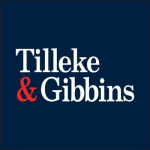The Myanmar Customs Department (MCD) organised another Intellectual Property Awareness and Product Identification Workshop at its Customs Training School in Yangon on August 6 2020, for its frontline customs officers. Such workshops are held several times every year, serving as a platform for foreign brand owners and their local representatives to educate and update the enforcement officers on methods for differentiating their genuine products from counterfeits and imitations when inspecting suspicious shipments at ports of entry into the country. The training sessions are also useful in encouraging collaborative discourse between the private and public sectors to improve the efficiency of their joint intellectual property rights enforcement efforts.
Customs recordation system in Myanmar
Despite the absence of specific laws or written guidelines enumerating the procedure and framework for recordation of trademarks, the MCD does have a customs recordation system in place. The MCD is empowered under the archaic Sea Customs Act 1878 (as amended up to 2015) to seize counterfeit goods entering Myanmar by land or sea. Under Section 18 of the act, goods bearing counterfeit trademarks and false trade descriptions are prohibited from entry into Myanmar.
Brand owners who have recorded trademarks at the Office of Registration of Deeds can record these marks at the MCD by supplying the following:
application letter;
distribution agreement or supply agreement with local distributor or partner;
declaration of ownership of trademark;
cautionary notice published in Myanmar newspapers;
date of first use in Myanmar and outside of Myanmar;
description of product;
trademark specimen;
brief identification guide of counterfeit/imitation goods and original goods; and
any other documents or information requested by the MCD.
If there are no complications, the recordation procedure can be completed in approximately two to four weeks. Upon recordation, it is also good practice for brand owners to organise product identification training sessions with customs officials. Thereafter, the MCD will identify infringing goods that arrive at the ports of entry throughout the country, and will notify brand owners or their representatives before taking further legal and enforcement actions.
New border control measures
It is still unclear whether the customs recordation system will be maintained when Myanmar's new Trademark Law 2019 enters into force in the near future. Under this law, a customs seizure order procedure will be implemented whereby rights holders can submit an application to the director general of the MCD to seize infringing goods. Corresponding provisions are also found in the Copyright Law 2019.
In the procedure stipulated under the law, rights holders may submit an application, and the MCD will issue its decision within 30 days. The MCD may request additional information from the rights holder, who will have 15 business days to fulfil such a request. When accepting an application for seizure, the MCD may also request the rights holder to provide a guarantee. Each seizure order will last for six months, unless the rights holder requests a shorter period. Upon the seizure of suspicious items, the rights holder and the importer will have an opportunity to inspect the items and take further action on the shipment. If no further legal action is undertaken within 15 days (three days for perishable goods), the seized goods will be released.
Customs recordation as part of an IP protection strategy
Customs recordation in Myanmar can be a valuable and powerful tool in fighting the trade in counterfeit goods. It broadens the scope of IP rights protection from one only focused internally to one that considers international movement of goods. By involving the right representatives and officials in Myanmar, rights holders can ensure that their IP management strategy is ready to respond to threats from both within Myanmar and beyond.

|
Sher Hann Chua |












